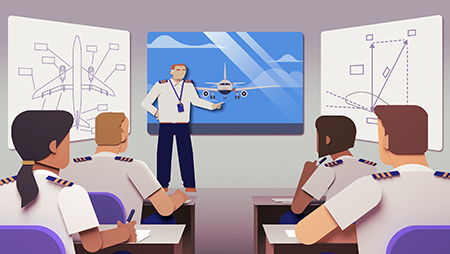THE FLASHBACK • September 2023
Five of the most memorable aviation feats
There’s a first time for everything – including some of the boldest feats of aviation. Here are five of the most unforgettable moments when humans took to the skies

1927: First solo flight across the Atlantic
“Well, I made it,” were Charles Lindbergh’s first words after landing at Paris’s Le Bourget Aerodrome after a pioneering 33-and-a-half-hour flight from New York. The 25-year-old American aviator had taken off on 20 May 1927, barely clearing the Long Island power lines as his Ryan NYP monoplane (aka the Spirit of St. Louis), laden with extra fuel tanks, climbed to altitude. Despite encountering a storm and ice crusting on the wings at night, having no cockpit radio and only being able to see forward through a periscope, Lindbergh’s biggest enemy was fatigue. He reported that he drifted off several times, hallucinated at one point, and kept the plane’s windows open to keep himself awake.

1947: Breaking the sound barrier
Glamorous Glennis was the first manned aircraft to fly faster than the speed of sound. Named after test pilot Charles ‘Chuck’ Yeager’s wife, the Bell X-1 was air launched by a Boeing B-29 bomber over California’s Mojave Desert on 14 October 1947, reaching a record speed of 700mph (Mach 1.06). “The X-1 was a pure rocket,” Yeager told Nova magazine in 1997. “Jet engines didn’t have the thrust to push the airplane into the region of the speed of sound or beyond.” Today you can see the single-seat tangerine aircraft at Virginia’s Steven F Udvar-Hazy Center.

1959: Longest nonstop flight
Think you’ve flown long haul? Try being airborne for 64 days, 22 hours and 19 minutes. In 1958, two men achieved just that in Hacienda, a Cessna 172, taking off on a madcap 150,000-mile flight around the desert outside Las Vegas and setting a world record that still stands. Robert Timm and John Cooke flew for more than two months straight, from 4 December to 7 February. How did they do it? Having expanded and modified the aircraft’s fuel tanks so they could be refilled with the engine running, the duo refuelled twice daily from mid-air, flying 20 feet above the ground and connecting to a fuel truck with a hose.

1996: British Airways NYC-LON in under three hours
Just 27 of our lucky customers were aboard the fastest ever passenger flight across the Atlantic. What they didn’t know when boarding supersonic jet Concorde on 7 February 1996 is that Captain Leslie Scott and his crew were aiming for a world record, taking advantage of ideal February conditions, jet stream boosts and ground communications to shave minutes off Concorde’s already impressive flight times. Their calculations were correct: it was just two hours, 52 minutes and 59 seconds from wheels-up to touchdown on the trip between John F Kennedy and Heathrow Airport ‒ still the record for a commercial transatlantic flight.

2009: World’s first flying car
Pigs might not ever fly, but it looks as if cars soon will. The first integrated, fixed ‘roadable aircraft’ ‒ that’s a flying car to you and me ‒ the Terrafugia Transition, took its first successful test flights in 2009. The two-seater vehicle, which takes just 15 seconds to convert from car to plane, hasn’t been unleashed on the roads just yet ‒ though the USA’s Federal Aviation Administration awarded it a Special Light-Sport Aircraft airworthiness certificate in 2021. It can fly at speeds of up to 100mph. Developers say drivers will need at least 20 recorded hours of flying time before being able to pilot one.
This article has been tagged Technology, Culture
More from previous issues

Eight things you didn’t know about our Global Learning Academy
We’re pulling back the curtain on our state-of-the-art training facility in this exclusive behind-the-scenes tour

Want to earn double Tier Points this year? Here’s how…
Fancy climbing effortlessly up the tiers of the Executive Club? Need a quick refresher on how it all works? Get up to speed with our guide

Airport transfer times: the hotlist
These five speedy city breaks get you from the airport to the city centre in no time at all

Five nature-tastic epic drives to double your Tier Points
Climb through the Tiers as you soar along the highways in some of the world’s most beautiful places
